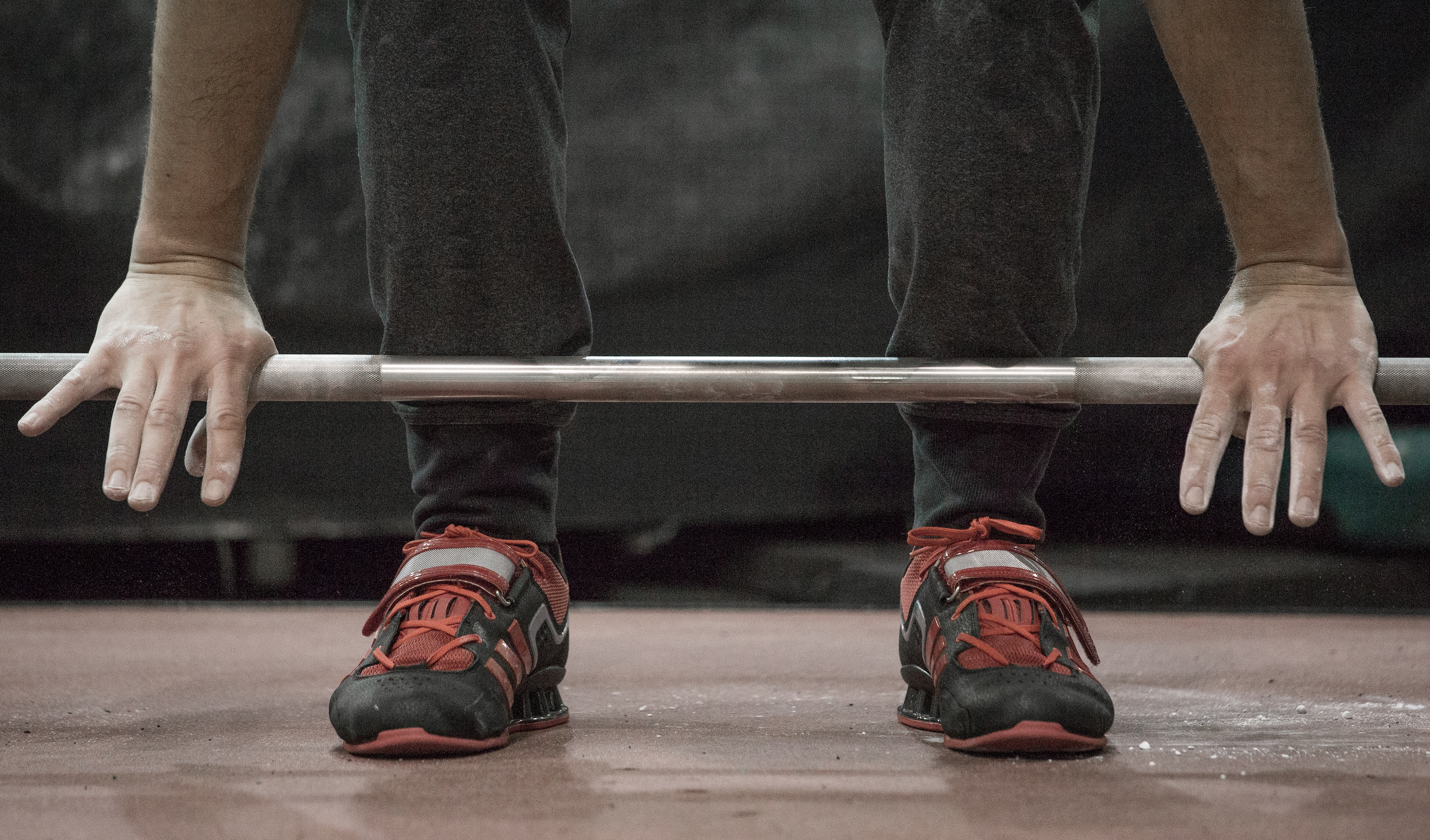At this point in life I should be receiving some form of compensation for the amount of athletes I’ve convinced to invest in lifters. I’m always dishing my shoes in the gym to help others see the benefits and reasons to get a pair, because they’re that worth it. A great pair of weightlifting shoes are more than shoes to a lifter; they’re an extension of their body. They go everywhere with the lifter and never seem to be forgotten during a training session. There have been times when I forget my belt and wraps, but I never leave my shoes behind.
Now more than ever we’re seeing companies come out with new color schemes, shoe models, and even shoe customization. That’s great news for the strength sports world. The constant need for shoes makes companies continue to improve current models, while adding personality aspects like color schemes. In strength sports there isn’t typically flashy gear, we have our gym clothes and the weights we move. Weightlifting shoes are one opportunity we have to add personality to the presence we bring with us to the gym. Not to mention, weightlifting shoes enhance our lifting in multiple ways.
[Want to find the best weightlifting shoe for you? Read our full rundown of the best lifting shoes!]
1. Elevated Heel
Weightlifting shoes have elevated heels, this enhances our abilities to maintain proper postures throughout lifts. When it comes to compound and Olympic movements an issue with maintaining proper postures can be a limiting factor in a successful lift. Heel elevations vary from shoe to shoe, the goal is to find the height that allows you to get in the power position with ease and maintain leverage.
What to look for: Find the heel height that allows you to feel comfortable at the bottom of the squat with an upright posture. Flexibility and mobility issues are factors to keep in mind, along with anthropometrics (femur length, shin angles, etc). A good rule of thumb is to find the shoe with a heel that matches your body type, higher heels for longer femurs.
2. Solid Base
Along with the elevated heel, weightlifting shoes provide a solid base to catch weight on. This usually is a hard plastic, wood, or combination of both. In any lift, the last thing you want is an unstable surface. By providing a hard base, we can feel more secure throughout the lift and increase our ability to maintain the postures needed.
What to look for: A firm base that feels good to land on. If you’re new to weightlifting shoes, it may feel weird at first having such a hard surface to land on – give it time. A good weightlifting shoe will have a base that doesn’t allow for any type of give or rocking, like a running shoe would.
3. Ankle Support
Most shoes are made with leather, rubber, or what feels like a plastic coating, this is for additional ankle and foot support. Some shoes even incorporate an added strap or two to provide extra support. This firmness flows with the solid base to create a secure feeling, which can help us spread the floor more efficiently to develop power.
What to look for: Most shoes are well made and will have the supporting material you need. Although, I have seen a few pairs on the cheaper end where I could see a future issue with wear and tear. Find a pair that doesn’t feel cheap and will last you more than a year.
4. Improved Mobility
This point ties in the elevated heel, solid base, and ankle support. These all improve our mobility throughout lifts, specifically in the ankle, knee, and hip. When we increase our ability to be mobile, we increase our chances to properly produce power and maintain postures. Poor ankle and hip flexion is a limiting factor for max power production in the squat and Olympic lifts.
What to look for: A shoe that fits well with your goals and lifting style. To further the elevated heel point, find a pair that makes you feel more mobile and secure throughout every posture, your shoe should make achieving the power position easier.
5. Improved Safety
A weightlifting shoe can be a preventative measure for injuries. When you’re performing complex movements and heavy lifts, there’s always an increased risk of injury. With a shoe that provides support and a solid base, you can decrease this risk. Shoes with rubber, unstable bases and lack of support can put the body in poor positions, which can cause injury.
What to look for: A shoe that fits snug and makes you feel secure. There shouldn’t be wiggle room or looseness throughout any point of the shoe.
6. Personal Touch
With so many new shoe designs and color schemes, we now have the opportunity to add some personality to our shoes. This can be a pretty cool aspect, not only does it add personality to your lifts, but it can be a point of recognition for yourself.
What to look for: A shoe that makes you feel great and proud. Do some research and find the perfect shoes that show your personality and gives you motivation every time you strap them on.
If you’re a regular lifter and haven’t looked into weightlifting shoes, what are you waiting for? They’re a great tool for enhancing your lifting performance and last a decent amount of time (relatively speaking). Think about it this way, would you perform a clean with an EZ-bar when an Eleiko bar is available? No, you would use the Eleiko bar because it’s built specifically to enhance your training.
Editors note: This article is an op-ed. The views expressed herein are the authors and don’t necessarily reflect the views of BarBend. Claims, assertions, opinions, and quotes have been sourced exclusively by the author.
Featured image and screenshots: Graham Holmberg on YouTube

